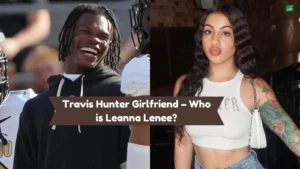When someone says Good for you, it can be challenging to know how to respond. This phrase, while often well-intentioned, can sometimes come across as dismissive or even condescending.
However, with the right response, you can turn this potentially awkward moment into an opportunity to showcase your personality, wit, or grace.
This comprehensive guide offers 30 unique ways to reply to Good for you, helping you define your personal style and navigate various social situations with ease.
Gracious Acknowledgments
Gracious acknowledgments are a polite and appreciative way to respond to Good for you. These responses show that you value the other person’s recognition of your achievement or situation.
Explanation:
By using gracious acknowledgments, you maintain a positive and respectful tone in the conversation. These responses are suitable for both casual and formal settings.
For Examples:
Thank you, I appreciate your support. That’s kind of you to say.
Witty Comebacks
Witty comebacks add a touch of humor and cleverness to your response, often lightening the mood and showcasing your quick thinking.
Explanation:
These responses work best when you have a rapport with the person and are in a relaxed social setting. They can help deflect any potential condescension in the original statement.
For Examples:
Thanks, I’ve been practicing my amazingness. I know, right? I surprise myself sometimes.
Humble Responses
Humble responses demonstrate modesty and help you avoid appearing boastful or overly proud of your accomplishments.
Explanation:
These replies are particularly useful in professional settings or when you want to downplay your achievements without seeming ungrateful for the recognition.
For Examples:
I was fortunate to have a great team supporting me. It was a collaborative effort; I can’t take all the credit.
Enthusiastic Replies
Enthusiastic replies match the positive energy of Good for you and amplify it, creating a more engaging and upbeat conversation.
Explanation:
These responses are ideal when you want to share your excitement or maintain a high-energy interaction, especially with friends or in celebratory contexts.
For Examples:
I’m thrilled about it too! It’s been an incredible journey, and I’m loving every moment.
Sarcastic Retorts
Sarcastic retorts can be used to playfully challenge the Good for you statement, especially if you perceive it as insincere or condescending.
Explanation:
Be cautious when using sarcasm, as it can be misinterpreted. These responses work best with close friends or in situations where your relationship allows for such banter.
For Examples:
Oh, gee, thanks for the overwhelming enthusiasm. I’ll make sure to add that to my list of life-changing compliments.
Professional Responses
Professional responses maintain a formal and respectful tone, suitable for workplace interactions or situations where you want to project a mature and composed image.
Explanation:
These replies acknowledge the comment while keeping the conversation focused and appropriate for a business or formal setting.
For Examples:
I appreciate your recognition of my efforts. Thank you, I’m committed to maintaining this level of performance.
Casual Reactions
Casual reactions are relaxed and informal, perfect for everyday conversations with friends, family, or acquaintances.
Explanation:
These responses help maintain a laid-back atmosphere and can prevent the conversation from becoming too serious or formal.
For Examples:
Thanks, I’m pretty stoked about it myself. Yeah, it’s been pretty cool so far.
Humorous Comebacks
Humorous comebacks use wit and jokes to create a lighthearted response to Good for you, often diffusing any potential awkwardness.
Explanation:
These replies can help build rapport and show your playful side, but be sure to gauge your audience to ensure the humor is appropriate and well-received.
For Examples:
Thanks, I’ve been secretly training to be awesome. Well, someone has to set the bar impossibly high, right?
Sincere Gratitude
Sincere gratitude responses express genuine appreciation for the recognition, reinforcing positive interactions and relationships.
Explanation:
These replies are versatile and can be used in various contexts, from personal achievements to professional successes, showing that you value the other person’s support.
For Examples:
Your support means a lot to me, thank you. I’m grateful for your acknowledgment and encouragement.
Deflecting Responses
Deflecting responses shift the focus away from yourself, either by redirecting the conversation or by including others in your success.
Explanation:
These replies can be useful when you feel uncomfortable with praise or want to avoid appearing boastful. They also provide an opportunity to recognize others’ contributions.
For Examples:
It’s all thanks to the amazing people around me. Enough about me, how have you been doing lately?
Self-Deprecating Humor
Self-deprecating humor uses gentle mockery of oneself to create a humorous and relatable response to Good for you.
Explanation:
This type of response can make you appear more approachable and humble, but use it sparingly to avoid undermining your achievements or appearing insecure.
For Examples:
Thanks, I’m as surprised as anyone that I pulled it off. Well, even a broken clock is right twice a day.
Confident Affirmations
Confident affirmations embrace the positive recognition and reinforce your self-assurance without appearing arrogant.
Explanation:
These responses are particularly effective when you want to project confidence in your abilities or decisions, especially in professional or competitive environments.
For Examples:
Thank you, I worked hard to achieve this. I’m proud of what I’ve accomplished and excited for what’s next.
Thoughtful Reflections
Thoughtful reflections offer a more introspective response, sharing insights or lessons learned from your experience.
Explanation:
These replies can turn a simple Good for you into a more meaningful conversation, allowing you to express depth and personal growth.
For Examples:
It’s been a journey of self-discovery, that’s for sure. I’ve learned so much about perseverance through this experience.
Quirky Replies
Quirky replies use unexpected or offbeat humor to create a memorable response to Good for you.
Explanation:
These responses can showcase your unique personality and creativity, but be mindful of your audience to ensure they appreciate your brand of quirkiness.
For Examples:
Thanks, I owe it all to my lucky left sock. Well, my pet rock said I could do it, so here we are.
Diplomatic Responses
Diplomatic responses navigate potentially tricky situations with tact and grace, especially when the Good for you might be perceived as insincere or competitive.
Explanation:
These replies help maintain positive relationships and defuse any tension, making them particularly useful in professional or delicate social situations.
For Examples:
I appreciate your acknowledgment. How has your experience been? Thank you. I believe we all have our own unique strengths to contribute.
Playful Banter
Playful banter responses engage the other person in a lighthearted exchange, turning Good for you into an opportunity for fun interaction.
Explanation:
These replies work best with friends or in casual settings where a bit of back-and-forth teasing is acceptable and enjoyed.
For Examples:
Thanks, I learned from the best – you, of course! Oh, stop it, you’ll make me blush… Okay, don’t stop, keep going.
Inspirational Comebacks
Inspirational comebacks use the Good for you moment to share motivational thoughts or encourage others.
Explanation:
These responses can be particularly impactful when your achievement or situation could serve as inspiration or a learning opportunity for others.
For Examples:
Thank you. I believe anyone can achieve their goals with dedication. It’s amazing what we can accomplish when we believe in ourselves.
Cultural Variations
Cultural variations take into account different cultural norms and expressions when responding to Good for you.
Explanation:
These replies demonstrate cultural awareness and can be particularly useful in diverse or international settings.
For Examples:
Merci beaucoup! It’s been a journey worth taking. Gracias! In my culture, we say ‘Qué bueno’ – it’s indeed very good!
Context-Specific Replies
Context-specific replies tailor your response to the particular situation or achievement being recognized.
Explanation:
These responses show that you’re engaged in the conversation and allow you to provide more relevant or detailed information about your experience.
For Examples:
Thanks! The marathon was tough, but crossing the finish line was worth it. I’m glad you think so. This project has been my focus for months.
Nonverbal Responses
Nonverbal responses use body language, facial expressions, or gestures to acknowledge the Good for you statement.
Explanation:
These can be used in combination with verbal responses or on their own, especially in situations where a spoken reply might be awkward or unnecessary.
For Examples:
A genuine smile and nod of appreciation. A thumbs-up gesture combined with a wink.
Philosophical Musings
Philosophical musings offer a contemplative or thought-provoking response to Good for you, elevating the conversation to a deeper level.
Explanation:
These replies can be particularly engaging in intellectual or reflective settings, prompting further discussion on broader themes or life lessons.
For Examples:
Indeed. It’s fascinating how our perception of success evolves over time. Thank you. It’s a reminder that growth often lies outside our comfort zone.
Celebratory Reactions
Celebratory reactions embrace the positive sentiment of Good for you and amplify it with expressions of joy or triumph.
Explanation:
These responses are perfect for significant achievements or moments of happiness, allowing you to share your excitement with others.
For Examples:
Thanks! I feel like dancing on cloud nine! It’s amazing, isn’t it? I can’t stop smiling!
Modest Acknowledgments
Modest acknowledgments balance accepting the praise with maintaining a humble perspective on your achievements.
Explanation:
These replies are useful when you want to show appreciation for the recognition without appearing boastful, especially in professional or formal settings.
For Examples:
Thank you, I was fortunate to have this opportunity. I’m glad it worked out well. There’s always more to learn and improve.
Assertive Comebacks
Assertive comebacks confidently affirm your achievements or decisions while maintaining respect for the other person.
Explanation:
These responses are particularly useful when dealing with backhanded compliments or when you need to stand firm in your choices or accomplishments.
For Example:
I appreciate your acknowledgment. I’m confident in my decision. Thank you. I’ve worked hard for this and I’m proud of the results.
Poetic Responses
Poetic responses use imagery, metaphor, or lyrical language to create a unique and memorable reply to Good for you.
Explanation:
These can showcase your creativity and add a touch of artistry to the conversation, though they’re best used in appropriate settings where such expression is appreciated.
For Examples:
Like a butterfly emerging, I’m spreading my wings. Thank you. Each step on this path paints a stroke on life’s canvas.
Emotional Expressions
Emotional expressions allow you to share genuine feelings in response to Good for you, creating a moment of authentic connection.
Explanation:
These replies can be powerful in personal relationships or significant life moments, showing vulnerability and depth of emotion.
For Examples:
I’m actually feeling quite overwhelmed by it all, in a good way. Your support means the world to me. I’m truly touched.
Situational Humor
Situational humor uses the specific context or circumstances to create a funny response to Good for you.
Explanation:
These replies can lighten the mood and show quick wit, but ensure the humor is appropriate for the situation and audience.
For Examples:
At a cooking classThanks! Who knew not burning water was such an achievement? After a successful presentationI’m just glad I didn’t trip over my words… or my feet.
Unexpected Twists
Unexpected twists take the conversation in a surprising direction, creating an memorable response to Good for you.
Explanation:
These replies can be attention-grabbing and showcase your creativity, but use them judiciously to avoid seeming dismissive of the original sentiment.
For Examples:
Thanks! By the way, did you know that penguins have knees? Appreciate it. Now, let’s solve world hunger. Any ideas?
Conclusion
Responding to Good for you doesn’t have to be a source of awkwardness or frustration. With this diverse array of 30 responses, you can choose the perfect reply to suit your personality, the situation, and your relationship with the speaker.
Whether you opt for grace, humor, reflection, or creativity, your response can turn a potentially dismissive phrase into an opportunity for meaningful connection or personal expression.
Remember, the key is to be authentic and considerate in your interactions. By mastering these varied responses, you’ll not only navigate social situations with ease but also define and showcase your unique communication style.

Dariel Campbell is the driving force behind ReplySwift.com. With a passion for crafting quick and impactful responses, Dariel helps others master the art of effective communication. On ReplySwift.com, he shares expert advice, practical templates, and insightful tips to make every reply count. Join Dariel and elevate your communication skills to new heights.












